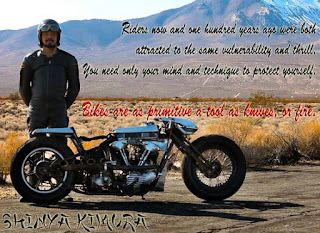July 2-18th I was commuting on the bike every day from Elora to Milton. The ride took me on country highways, country backroads, down the escarpment, on a 13 km blast down the 401 to James Snow Parkway, then 5 kms of urban riding in Milton.
At 70 kms a day each way of riding, I piled up over 1820 kms on the bike in three weeks. I’d fill it up every 3rd day, costing about $16 and change and it would take me 190 or so miles (305kms) before the fuel warning light came on (it’s a 15 litre tank). I never tested the reserve too much, I think, conservatively, I can get 220 miles to a tank before things get frantic. Based on the amount I was putting in and the miles on the odometer, I was getting about 58mpg, which is impressive because it’s hard not to wind this bike up, it likes to go. 58mpg when I’m spending an inordinate amount of time in the top half of the rev range is impressive.
The coldest morning had the air temperature at 12° Celsius (53°F), the hotest ride home had me at 37°C (99°F). On those cold, rainy mornings I had the long gloves on and ended up stopping to put the rain jacket on just to warm up. On the hottest day (today), I road home in shorts and the jacket open.
Daily riding has made my shifting smoother, and I don’t think twice about riding in urban or highway settings. My first couple of goes on the 401 were tentative, by the end of the week I was getting on the highway the same way I do in a car – looking for the left hand lane. The Ninja goes from almost nothing to two miles a minute in an astonishingly short time.
This morning I rode out into ground fog, with the tops of trees and old, stone farmhouses peaking out of the mist. You can smell a river and you cross it. You can smell hot brakes on the 401 from trucks before you see brake lights. Riding is such a sensual experience. I think the quiet time without radio or music, just the sound of the wind and the distant thrum of the Kawasaki twin was centering. I got to class (computer engineering) every day oxygenated and ready to go. I came home tired but clear minded.
1820 kms, 1131 miles… after doing this I think a couple of tanks a day would be a good way to measure a long trip. At just over 300 kms each tank, 600 kms a day and I’d be ready to put my boots up and relax, having been through the places instead of driving through them.
The daily commute demystified the experience of riding for me. I found ways to stretch (stretching my legs out on the frame sliders is a nice way to get a breeze up your pant leg), and standing up on the footpegs every once in a while cools off your seat and thighs.
With familiarity I’ve found that the Ninja is a very forgiving, but very capable bike. I’ve no regrets that it’s my first bike. A more relaxed (ie: upright, proper, not cruiser) riding position would be nice, but I found that I fit the Ninja better and better as the commute went on. I always looked forward to throwing a leg over it, and when the weather was bad (almost zero visibility rain one morning), I had no regrets from riding it down. Every day was an adventure.
.jpg) Since I’m in riding withdrawal I’ve been continuing my overdose on motorcycle media.
Since I’m in riding withdrawal I’ve been continuing my overdose on motorcycle media.
 BIKE magazine is a big one in the UK and I can see why. The writing is top notch, I was laughing out loud as I read one piece on all the ways an author has fallen off a motorcycle.
BIKE magazine is a big one in the UK and I can see why. The writing is top notch, I was laughing out loud as I read one piece on all the ways an author has fallen off a motorcycle. 





















































